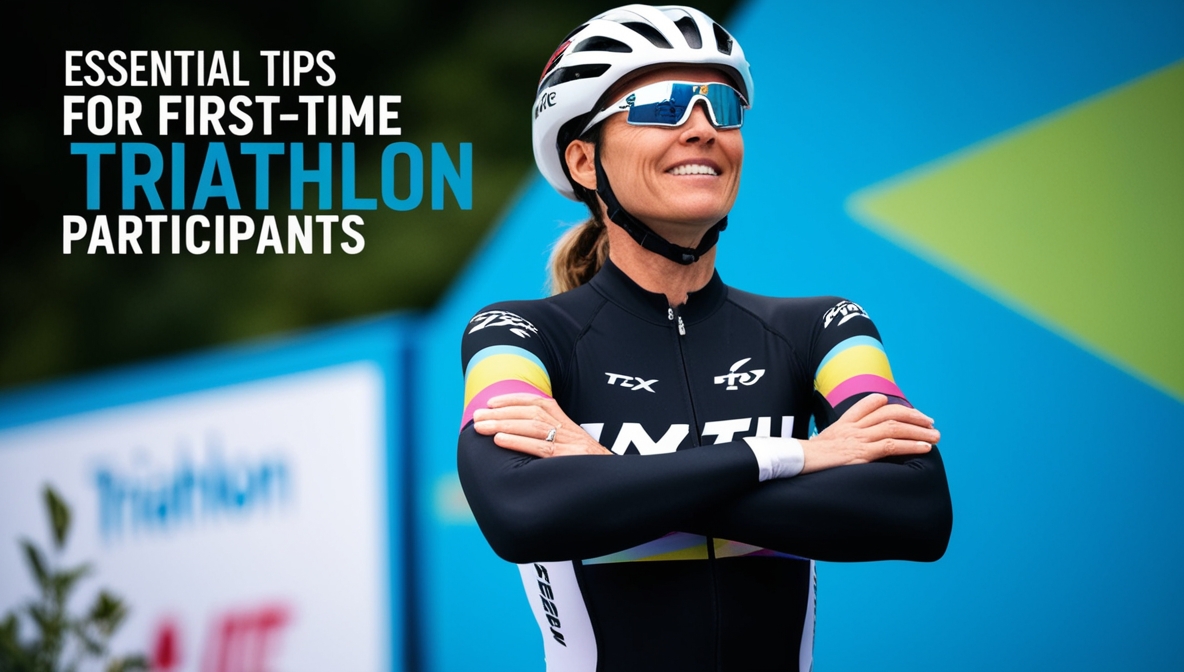A triathlon—swim, bike, and run—can feel overwhelming if it’s your first race. How do you prepare? Where do you start? The right plan and mindset will help you cross the finish line confidently. Here’s a breakdown of essential tips for first-time triathletes to ensure you’re ready for race day.
Understand the Race Format
Triathlons come in various distances. Knowing your event type sets clear expectations:
- Sprint Triathlon: 750m swim, 20km bike, 5km run
- Olympic Distance: 1.5km swim, 40km bike, 10km run
- Half-Ironman (70.3): 1.9km swim, 90km bike, 21.1km run
- Full Ironman: 3.8km swim, 180km bike, 42.2km run
Check the official race rules for time limits, equipment guidelines, and penalties to avoid surprises on the course.
Build a Structured Training Plan
Consistency is your biggest asset. Schedule training sessions for all three disciplines weekly. Here’s a sample beginner framework:
- Swim: 2–3 times/week. Work on endurance and breathing techniques.
- Bike: 2–3 times/week. Focus on time in the saddle, not just speed.
- Run: 2–3 times/week. Combine long runs with interval training.
- Brick Workouts: Combine two disciplines back-to-back (e.g., bike then run) to adapt to transitions.
Avoid cramming. Start 12–16 weeks in advance to allow steady progression.
Invest in the Right Gear
You don’t need the most expensive equipment, but a few essentials can improve performance and comfort:
- Triathlon-Specific Wetsuit: Helps with buoyancy and temperature during open-water swims.
- Bike: A road bike is fine for beginners. Ensure proper fit and functionality.
- Running Shoes: Visit a specialty store to find shoes tailored to your stride.
- Tri Suit: Wear one outfit for the entire race to minimize transition times.
Additional items include goggles, a helmet, race belt, and hydration bottles. Test all gear before race day.
Master Transitions
Transitions—moving from swim to bike (T1) and bike to run (T2)—are often overlooked. Practice these to avoid losing time:
- T1 (Swim to Bike): Practice quickly removing your wetsuit and putting on cycling gear. Place everything neatly in a specific order.
- T2 (Bike to Run): Learn to dismount efficiently and switch to running shoes seamlessly.
Set up a small mock transition area at home to rehearse your routine.
Train in Open Water
Swimming in open water differs from pools. Prepare yourself by practicing these skills:
- Sighting: Lift your head occasionally to spot buoys and stay on course.
- Adjust to Waves and Currents: The natural environment requires more energy and control.
- Start in a Crowd: Simulate the chaos of a mass swim start to avoid panic.
Wear your wetsuit during training to get comfortable with its feel and fit.
Fuel Your Body Properly
Nutrition can make or break your race. Balance your energy levels with the right intake:
- Pre-Race Meal: Eat a light, carb-heavy breakfast 2–3 hours before start time. Oatmeal, toast, and bananas are great choices.
- During the Race: For sprints, water may suffice. For longer races, incorporate gels, energy chews, or electrolyte drinks.
- Hydration: Sip fluids throughout your bike and run. Practice your fueling strategy during training to avoid stomach issues.
Pace Yourself Wisely
A common beginner mistake is starting too fast. Manage your effort across all three legs:
- Swim: Begin at a steady pace. Focus on breathing rhythm and efficiency.
- Bike: Maintain a moderate, sustainable effort. Don’t burn out before the run.
- Run: Settle into a manageable pace. If you feel strong, pick it up toward the end.
Use a watch or heart rate monitor to track your intensity. Save energy for a strong finish.
Test Race-Day Conditions
Simulate race-day scenarios during training to boost confidence:
- Train at Race Start Time: Adapt your body to early mornings.
- Use Race Gear: Wear the same wetsuit, shoes, and kit to ensure comfort.
- Practice on Similar Terrain: Train on courses with similar hills, road types, or open water.
Small adjustments—like knowing where to stash your gear—help avoid unnecessary stress.
Focus on Mental Preparation
Triathlons are as much a mental game as physical. Build mental resilience with these strategies:
- Visualize Success: Imagine yourself transitioning smoothly and crossing the finish line.
- Positive Self-Talk: Replace doubt with encouraging mantras like “I am strong” or “One step at a time.”
- Break the Race Into Segments: Tackle one leg at a time to avoid feeling overwhelmed.
Stay calm if something goes wrong. Adjust, problem-solve, and move forward.
Arrive Early on Race Day
Give yourself ample time to set up and get settled:
- Check In: Collect your race number and timing chip.
- Set Up Transition Area: Lay gear out methodically for quick access.
- Warm Up: Do light jogging or swimming to get your body race-ready.
- Know the Course: Walk through the transition area and note key landmarks.
Being early eliminates last-minute scrambling and sets a relaxed tone.
Listen to Your Body
Triathlons are demanding. Pay attention to signals of fatigue, dehydration, or discomfort:
- Know Your Limits: If you feel unwell, slow down or stop to recover.
- Train Smart: Avoid overtraining, as injuries can derail progress. Include rest days in your plan.
Recovery matters. Post-race, focus on hydration, stretching, and refueling to allow your body to bounce back.
Celebrate Your Finish
Crossing the finish line—no matter your time—is a significant achievement. Whether your goal is to finish or compete, completing your first triathlon is something to be proud of.
Take photos, thank your supporters, and enjoy the moment. Reflect on what went well and where you can improve for your next event.
Final Thoughts
Preparing for your first triathlon requires commitment, smart training, and patience. Focus on steady progress, test your equipment, and trust the process. With the right preparation, you’ll cross the finish line stronger, wiser, and ready for more challenges ahead.
